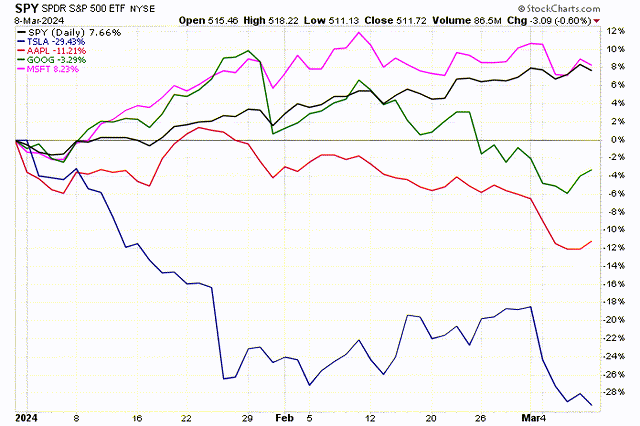The article “Potential Rate Cuts by Fed Expected by June” highlights the potential for rate cuts by the Federal Reserve in the coming months. The recent job market report suggests a soft landing, creating an environment conducive to rate cuts. This sentiment is further reinforced by the rotation away from technology stocks towards sectors like healthcare, financials, materials, industrials, and energy. Small-cap stocks are starting to outperform, indicating a shift towards value stocks. This shift is supported by improving rates of change in earnings outperformance and catalysts such as the Fed’s rate-cut cycle and recovery in the manufacturing sector. As a result, experts recommend rebalancing portfolios to include more emphasis on value and less on growth.
Recent Job Market Report
The recent job market report has indicated a soft landing for the economy. This report suggests that the economy is experiencing a slowdown, but it is not expected to result in a recession. This soft landing can be seen as a positive sign, as it indicates a controlled and gradual slowing down of economic growth.
Furthermore, the report also suggests that there may be potential rate cuts by the Federal Reserve by June. This is seen as a proactive measure by the Fed to support the economy and stimulate growth. Lower interest rates can encourage borrowing and spending, which in turn can boost economic activity. The potential rate cuts by the Fed signify their commitment to maintaining a stable and sustainable economy.
Growth vs Value
In recent times, there has been a notable shift in investor preferences from growth stocks to value stocks. One indication of this shift is the outflows from technology funds. Investors are reducing their exposure to technology stocks, which have been driving the market growth for a considerable period. This shift suggests that investors are becoming more cautious about the valuations of these high-growth stocks.
Another significant factor that points towards a potential peak in growth relative to value is the record premium of semiconductor stocks. These stocks have been performing exceptionally well, with investors willing to pay a premium for them. However, such high premiums could be an indication that these stocks have reached their peak and may be due for a slowdown.
Rotation Towards Small-Cap Stocks
A noticeable trend in the market is the outperformance of small-cap stocks. This indicates a rotation away from technology stocks towards other sectors. Small-cap stocks, which typically represent smaller companies, have been delivering better returns compared to their larger counterparts. This shift suggests that investors are diversifying their portfolios and seeking opportunities outside the technology sector.
As the rotation away from technology stocks continues, sectors like healthcare, financials, materials, industrials, and energy are gaining more emphasis. These sectors are seen as potential areas for growth and value, with investors shifting their focus towards companies operating in these sectors. This rotation is a testament to the market’s appetite for diversification and the search for more sustainable investment options.
Support for Value Stocks
The shift towards value stocks is further supported by the improving rate of change in earnings outperformance. Value stocks, which are typically seen as undervalued and have lower price-to-earnings ratios, have shown an improvement in their earnings compared to growth stocks. This suggests that these companies have the potential for future growth and could outperform the market.
Additionally, catalysts such as the Fed’s rate-cut cycle and recovery in the manufacturing sector are contributing to the support for value stocks. The Fed’s rate cuts can provide a favorable economic environment for value stocks to thrive, as lower borrowing costs can help these companies expand and invest in their growth. The recovery in the manufacturing sector also indicates a potential revival in value stocks, as they are often closely tied to manufacturing and industrial activities.
Rebalancing Portfolios
Given the recent market trends and the potential for a shift towards value stocks, it is recommended to rebalance portfolios by including more emphasis on value and reducing the emphasis on growth. This rebalancing aligns with the market dynamics and aims to capture the potential opportunities in sectors that are gaining momentum.
Investors should consider evaluating their current portfolio allocation and assess their exposure to growth and value stocks. By adjusting the allocation to include a higher proportion of value stocks, investors can potentially diversify their risk and position their portfolios for potential growth in these sectors. Reducing the emphasis on growth stocks can help mitigate the risk of value stocks reaching their peak relative to growth.
In conclusion, the recent job market report suggests a soft landing for the economy, with potential rate cuts by the Fed by June. The market is experiencing a shift from growth to value, as indicated by outflows from technology funds and the premium of semiconductor stocks. This rotation is accompanied by the outperformance of small-cap stocks and a focus on sectors like healthcare, financials, materials, industrials, and energy. The support for value stocks is reinforced by improving earnings outperformance and catalysts like the Fed’s rate-cut cycle and manufacturing sector recovery. Rebalancing portfolios to include more emphasis on value and less on growth is recommended to align with the current market dynamics and capture potential opportunities.

